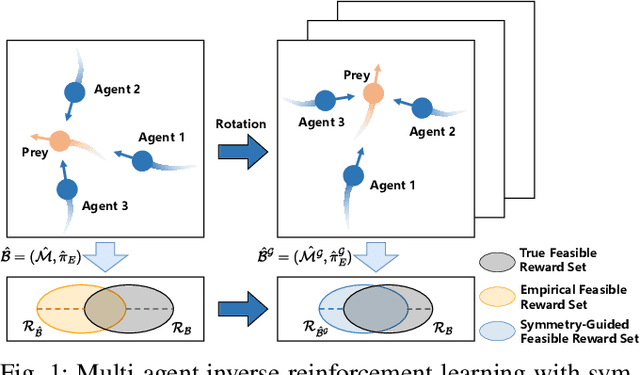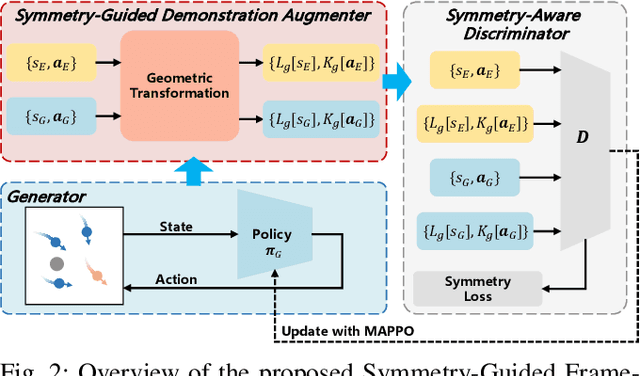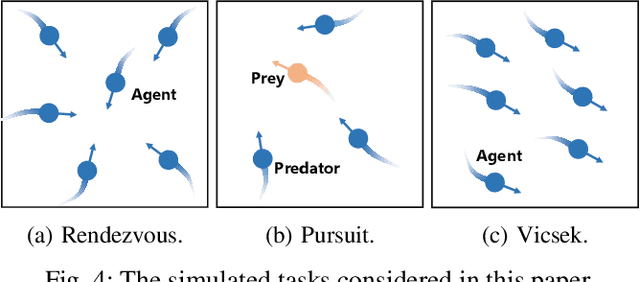Xin Yu
SoundAI Technology Co., Ltd
Towards Better Optimization For Listwise Preference in Diffusion Models
Oct 02, 2025Abstract:Reinforcement learning from human feedback (RLHF) has proven effectiveness for aligning text-to-image (T2I) diffusion models with human preferences. Although Direct Preference Optimization (DPO) is widely adopted for its computational efficiency and avoidance of explicit reward modeling, its applications to diffusion models have primarily relied on pairwise preferences. The precise optimization of listwise preferences remains largely unaddressed. In practice, human feedback on image preferences often contains implicit ranked information, which conveys more precise human preferences than pairwise comparisons. In this work, we propose Diffusion-LPO, a simple and effective framework for Listwise Preference Optimization in diffusion models with listwise data. Given a caption, we aggregate user feedback into a ranked list of images and derive a listwise extension of the DPO objective under the Plackett-Luce model. Diffusion-LPO enforces consistency across the entire ranking by encouraging each sample to be preferred over all of its lower-ranked alternatives. We empirically demonstrate the effectiveness of Diffusion-LPO across various tasks, including text-to-image generation, image editing, and personalized preference alignment. Diffusion-LPO consistently outperforms pairwise DPO baselines on visual quality and preference alignment.
Vulnerable Agent Identification in Large-Scale Multi-Agent Reinforcement Learning
Sep 18, 2025Abstract:Partial agent failure becomes inevitable when systems scale up, making it crucial to identify the subset of agents whose compromise would most severely degrade overall performance. In this paper, we study this Vulnerable Agent Identification (VAI) problem in large-scale multi-agent reinforcement learning (MARL). We frame VAI as a Hierarchical Adversarial Decentralized Mean Field Control (HAD-MFC), where the upper level involves an NP-hard combinatorial task of selecting the most vulnerable agents, and the lower level learns worst-case adversarial policies for these agents using mean-field MARL. The two problems are coupled together, making HAD-MFC difficult to solve. To solve this, we first decouple the hierarchical process by Fenchel-Rockafellar transform, resulting a regularized mean-field Bellman operator for upper level that enables independent learning at each level, thus reducing computational complexity. We then reformulate the upper-level combinatorial problem as a MDP with dense rewards from our regularized mean-field Bellman operator, enabling us to sequentially identify the most vulnerable agents by greedy and RL algorithms. This decomposition provably preserves the optimal solution of the original HAD-MFC. Experiments show our method effectively identifies more vulnerable agents in large-scale MARL and the rule-based system, fooling system into worse failures, and learns a value function that reveals the vulnerability of each agent.
Symmetry-Guided Multi-Agent Inverse Reinforcement Learning
Sep 11, 2025



Abstract:In robotic systems, the performance of reinforcement learning depends on the rationality of predefined reward functions. However, manually designed reward functions often lead to policy failures due to inaccuracies. Inverse Reinforcement Learning (IRL) addresses this problem by inferring implicit reward functions from expert demonstrations. Nevertheless, existing methods rely heavily on large amounts of expert demonstrations to accurately recover the reward function. The high cost of collecting expert demonstrations in robotic applications, particularly in multi-robot systems, severely hinders the practical deployment of IRL. Consequently, improving sample efficiency has emerged as a critical challenge in multi-agent inverse reinforcement learning (MIRL). Inspired by the symmetry inherent in multi-agent systems, this work theoretically demonstrates that leveraging symmetry enables the recovery of more accurate reward functions. Building upon this insight, we propose a universal framework that integrates symmetry into existing multi-agent adversarial IRL algorithms, thereby significantly enhancing sample efficiency. Experimental results from multiple challenging tasks have demonstrated the effectiveness of this framework. Further validation in physical multi-robot systems has shown the practicality of our method.
The Sound of Risk: A Multimodal Physics-Informed Acoustic Model for Forecasting Market Volatility and Enhancing Market Interpretability
Aug 26, 2025Abstract:Information asymmetry in financial markets, often amplified by strategically crafted corporate narratives, undermines the effectiveness of conventional textual analysis. We propose a novel multimodal framework for financial risk assessment that integrates textual sentiment with paralinguistic cues derived from executive vocal tract dynamics in earnings calls. Central to this framework is the Physics-Informed Acoustic Model (PIAM), which applies nonlinear acoustics to robustly extract emotional signatures from raw teleconference sound subject to distortions such as signal clipping. Both acoustic and textual emotional states are projected onto an interpretable three-dimensional Affective State Label (ASL) space-Tension, Stability, and Arousal. Using a dataset of 1,795 earnings calls (approximately 1,800 hours), we construct features capturing dynamic shifts in executive affect between scripted presentation and spontaneous Q&A exchanges. Our key finding reveals a pronounced divergence in predictive capacity: while multimodal features do not forecast directional stock returns, they explain up to 43.8% of the out-of-sample variance in 30-day realized volatility. Importantly, volatility predictions are strongly driven by emotional dynamics during executive transitions from scripted to spontaneous speech, particularly reduced textual stability and heightened acoustic instability from CFOs, and significant arousal variability from CEOs. An ablation study confirms that our multimodal approach substantially outperforms a financials-only baseline, underscoring the complementary contributions of acoustic and textual modalities. By decoding latent markers of uncertainty from verifiable biometric signals, our methodology provides investors and regulators a powerful tool for enhancing market interpretability and identifying hidden corporate uncertainty.
UniGeo: Taming Video Diffusion for Unified Consistent Geometry Estimation
May 30, 2025Abstract:Recently, methods leveraging diffusion model priors to assist monocular geometric estimation (e.g., depth and normal) have gained significant attention due to their strong generalization ability. However, most existing works focus on estimating geometric properties within the camera coordinate system of individual video frames, neglecting the inherent ability of diffusion models to determine inter-frame correspondence. In this work, we demonstrate that, through appropriate design and fine-tuning, the intrinsic consistency of video generation models can be effectively harnessed for consistent geometric estimation. Specifically, we 1) select geometric attributes in the global coordinate system that share the same correspondence with video frames as the prediction targets, 2) introduce a novel and efficient conditioning method by reusing positional encodings, and 3) enhance performance through joint training on multiple geometric attributes that share the same correspondence. Our results achieve superior performance in predicting global geometric attributes in videos and can be directly applied to reconstruction tasks. Even when trained solely on static video data, our approach exhibits the potential to generalize to dynamic video scenes.
Embedded Mean Field Reinforcement Learning for Perimeter-defense Game
May 20, 2025Abstract:With the rapid advancement of unmanned aerial vehicles (UAVs) and missile technologies, perimeter-defense game between attackers and defenders for the protection of critical regions have become increasingly complex and strategically significant across a wide range of domains. However, existing studies predominantly focus on small-scale, simplified two-dimensional scenarios, often overlooking realistic environmental perturbations, motion dynamics, and inherent heterogeneity--factors that pose substantial challenges to real-world applicability. To bridge this gap, we investigate large-scale heterogeneous perimeter-defense game in a three-dimensional setting, incorporating realistic elements such as motion dynamics and wind fields. We derive the Nash equilibrium strategies for both attackers and defenders, characterize the victory regions, and validate our theoretical findings through extensive simulations. To tackle large-scale heterogeneous control challenges in defense strategies, we propose an Embedded Mean-Field Actor-Critic (EMFAC) framework. EMFAC leverages representation learning to enable high-level action aggregation in a mean-field manner, supporting scalable coordination among defenders. Furthermore, we introduce a lightweight agent-level attention mechanism based on reward representation, which selectively filters observations and mean-field information to enhance decision-making efficiency and accelerate convergence in large-scale tasks. Extensive simulations across varying scales demonstrate the effectiveness and adaptability of EMFAC, which outperforms established baselines in both convergence speed and overall performance. To further validate practicality, we test EMFAC in small-scale real-world experiments and conduct detailed analyses, offering deeper insights into the framework's effectiveness in complex scenarios.
AltLoRA: Towards Better Gradient Approximation in Low-Rank Adaptation with Alternating Projections
May 18, 2025Abstract:Low-Rank Adaptation (LoRA) has emerged as an effective technique for reducing memory overhead in fine-tuning large language models. However, it often suffers from sub-optimal performance compared with full fine-tuning since the update is constrained in the low-rank space. Recent variants such as LoRA-Pro attempt to mitigate this by adjusting the gradients of the low-rank matrices to approximate the full gradient. However, LoRA-Pro's solution is not unique, and different solutions can lead to significantly varying performance in ablation studies. Besides, to incorporate momentum or adaptive optimization design, approaches like LoRA-Pro must first compute the equivalent gradient, causing a higher memory cost close to full fine-tuning. A key challenge remains in integrating momentum properly into the low-rank space with lower memory cost. In this work, we propose AltLoRA, an alternating projection method that avoids the difficulties in gradient approximation brought by the joint update design, meanwhile integrating momentum without higher memory complexity. Our theoretical analysis provides convergence guarantees and further shows that AltLoRA enables stable feature learning and robustness to transformation invariance. Extensive experiments across multiple tasks demonstrate that AltLoRA outperforms LoRA and its variants, narrowing the gap toward full fine-tuning while preserving superior memory efficiency.
A Synergistic Framework of Nonlinear Acoustic Computing and Reinforcement Learning for Real-World Human-Robot Interaction
May 04, 2025Abstract:This paper introduces a novel framework integrating nonlinear acoustic computing and reinforcement learning to enhance advanced human-robot interaction under complex noise and reverberation. Leveraging physically informed wave equations (e.g., Westervelt, KZK), the approach captures higher-order phenomena such as harmonic generation and shock formation. By embedding these models in a reinforcement learning-driven control loop, the system adaptively optimizes key parameters (e.g., absorption, beamforming) to mitigate multipath interference and non-stationary noise. Experimental evaluations-covering far-field localization, weak signal detection, and multilingual speech recognition-demonstrate that this hybrid strategy surpasses traditional linear methods and purely data-driven baselines, achieving superior noise suppression, minimal latency, and robust accuracy in demanding real-world scenarios. The proposed system demonstrates broad application prospects in AI hardware, robot, machine audition, artificial audition, and brain-machine interfaces.
Leveraging Diffusion Model and Image Foundation Model for Improved Correspondence Matching in Coronary Angiography
Mar 31, 2025Abstract:Accurate correspondence matching in coronary angiography images is crucial for reconstructing 3D coronary artery structures, which is essential for precise diagnosis and treatment planning of coronary artery disease (CAD). Traditional matching methods for natural images often fail to generalize to X-ray images due to inherent differences such as lack of texture, lower contrast, and overlapping structures, compounded by insufficient training data. To address these challenges, we propose a novel pipeline that generates realistic paired coronary angiography images using a diffusion model conditioned on 2D projections of 3D reconstructed meshes from Coronary Computed Tomography Angiography (CCTA), providing high-quality synthetic data for training. Additionally, we employ large-scale image foundation models to guide feature aggregation, enhancing correspondence matching accuracy by focusing on semantically relevant regions and keypoints. Our approach demonstrates superior matching performance on synthetic datasets and effectively generalizes to real-world datasets, offering a practical solution for this task. Furthermore, our work investigates the efficacy of different foundation models in correspondence matching, providing novel insights into leveraging advanced image foundation models for medical imaging applications.
Safe and Reliable Diffusion Models via Subspace Projection
Mar 21, 2025Abstract:Large-scale text-to-image (T2I) diffusion models have revolutionized image generation, enabling the synthesis of highly detailed visuals from textual descriptions. However, these models may inadvertently generate inappropriate content, such as copyrighted works or offensive images. While existing methods attempt to eliminate specific unwanted concepts, they often fail to ensure complete removal, allowing the concept to reappear in subtle forms. For instance, a model may successfully avoid generating images in Van Gogh's style when explicitly prompted with 'Van Gogh', yet still reproduce his signature artwork when given the prompt 'Starry Night'. In this paper, we propose SAFER, a novel and efficient approach for thoroughly removing target concepts from diffusion models. At a high level, SAFER is inspired by the observed low-dimensional structure of the text embedding space. The method first identifies a concept-specific subspace $S_c$ associated with the target concept c. It then projects the prompt embeddings onto the complementary subspace of $S_c$, effectively erasing the concept from the generated images. Since concepts can be abstract and difficult to fully capture using natural language alone, we employ textual inversion to learn an optimized embedding of the target concept from a reference image. This enables more precise subspace estimation and enhances removal performance. Furthermore, we introduce a subspace expansion strategy to ensure comprehensive and robust concept erasure. Extensive experiments demonstrate that SAFER consistently and effectively erases unwanted concepts from diffusion models while preserving generation quality.
 Add to Chrome
Add to Chrome Add to Firefox
Add to Firefox Add to Edge
Add to Edge